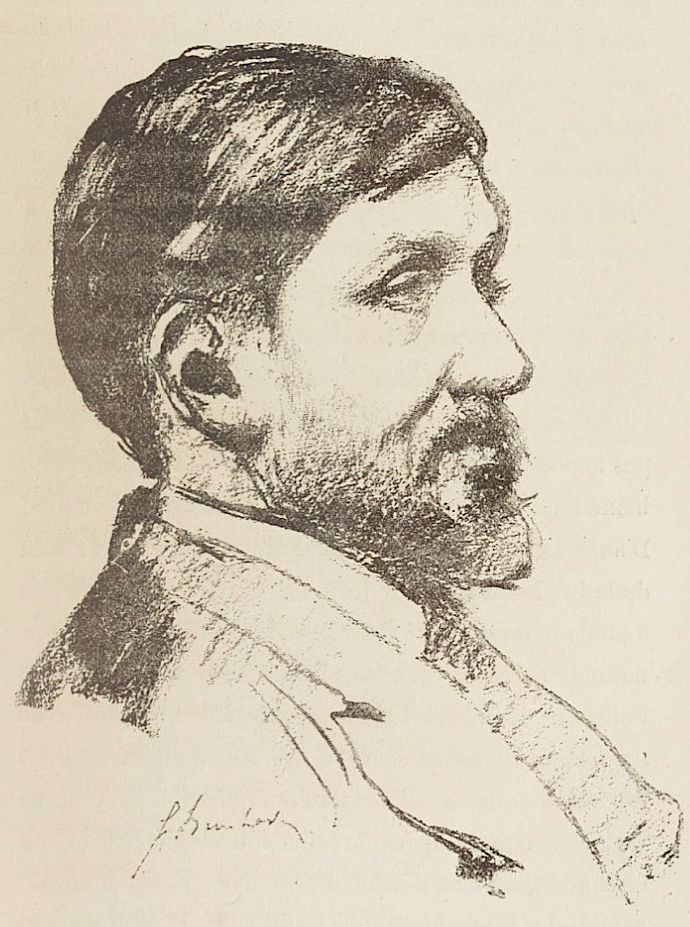|
Ferdinand Humbert
Jacques-Ferdinand Humbert (8 October 1842, in Paris – 6 October 1934, in Paris) was a French painter who specialized in portraits and historical scenes. Life and work His uncle, Jean Charles Ferdinand Humbert (1813–1881), was a famous landscape painter who had studied with Ingres. He received his education at the École nationale supérieure des Beaux-Arts in Paris, where he enrolled in 1861. His teachers there included François-Édouard Picot, Alexandre Cabanel and Eugène Fromentin. His first showing at the Salon (Paris), Salon came in 1865, with a canvas depicting the "Flight of Nero". He received awards at subsequent Salons in 1866, 1867 and 1869. In 1874, he began what would become his major life's work; "Pro Patria" (For the Homeland), a series of wall paintings at the Panthéon, which were completed in 1900. They comprised a cycle of the history of France and Paris, as well as a celebration of the French Third Republic, Republic. His fame extended outside France ... [...More Info...] [...Related Items...] OR: [Wikipedia] [Google] [Baidu] |
Ferdinand Humbert
Jacques-Ferdinand Humbert (8 October 1842, in Paris – 6 October 1934, in Paris) was a French painter who specialized in portraits and historical scenes. Life and work His uncle, Jean Charles Ferdinand Humbert (1813–1881), was a famous landscape painter who had studied with Ingres. He received his education at the École nationale supérieure des Beaux-Arts in Paris, where he enrolled in 1861. His teachers there included François-Édouard Picot, Alexandre Cabanel and Eugène Fromentin. His first showing at the Salon (Paris), Salon came in 1865, with a canvas depicting the "Flight of Nero". He received awards at subsequent Salons in 1866, 1867 and 1869. In 1874, he began what would become his major life's work; "Pro Patria" (For the Homeland), a series of wall paintings at the Panthéon, which were completed in 1900. They comprised a cycle of the history of France and Paris, as well as a celebration of the French Third Republic, Republic. His fame extended outside France ... [...More Info...] [...Related Items...] OR: [Wikipedia] [Google] [Baidu] |
Georges Braque
Georges Braque ( , ; 13 May 1882 – 31 August 1963) was a major 20th-century List of French artists, French painter, Collage, collagist, Drawing, draughtsman, printmaker and sculpture, sculptor. His most notable contributions were in his alliance with Fauvism from 1905, and the role he played in the development of Cubism. Braque's work between 1908 and 1912 is closely associated with that of his colleague Pablo Picasso. Their respective Cubist works were indistinguishable for many years, yet the quiet nature of Braque was partially eclipsed by the fame and notoriety of Picasso. Early life Georges Braque was born on 13 May 1882 in Argenteuil, Val-d'Oise. He grew up in Le Havre and trained to be a house painter and interior decorator, decorator like his father and grandfather. However, he also studied artistic painting during evenings at the École supérieure d'art et design Le Havre-Rouen, previously known as the École supérieure des Arts in Le Havre, from about 1897 to 189 ... [...More Info...] [...Related Items...] OR: [Wikipedia] [Google] [Baidu] |

